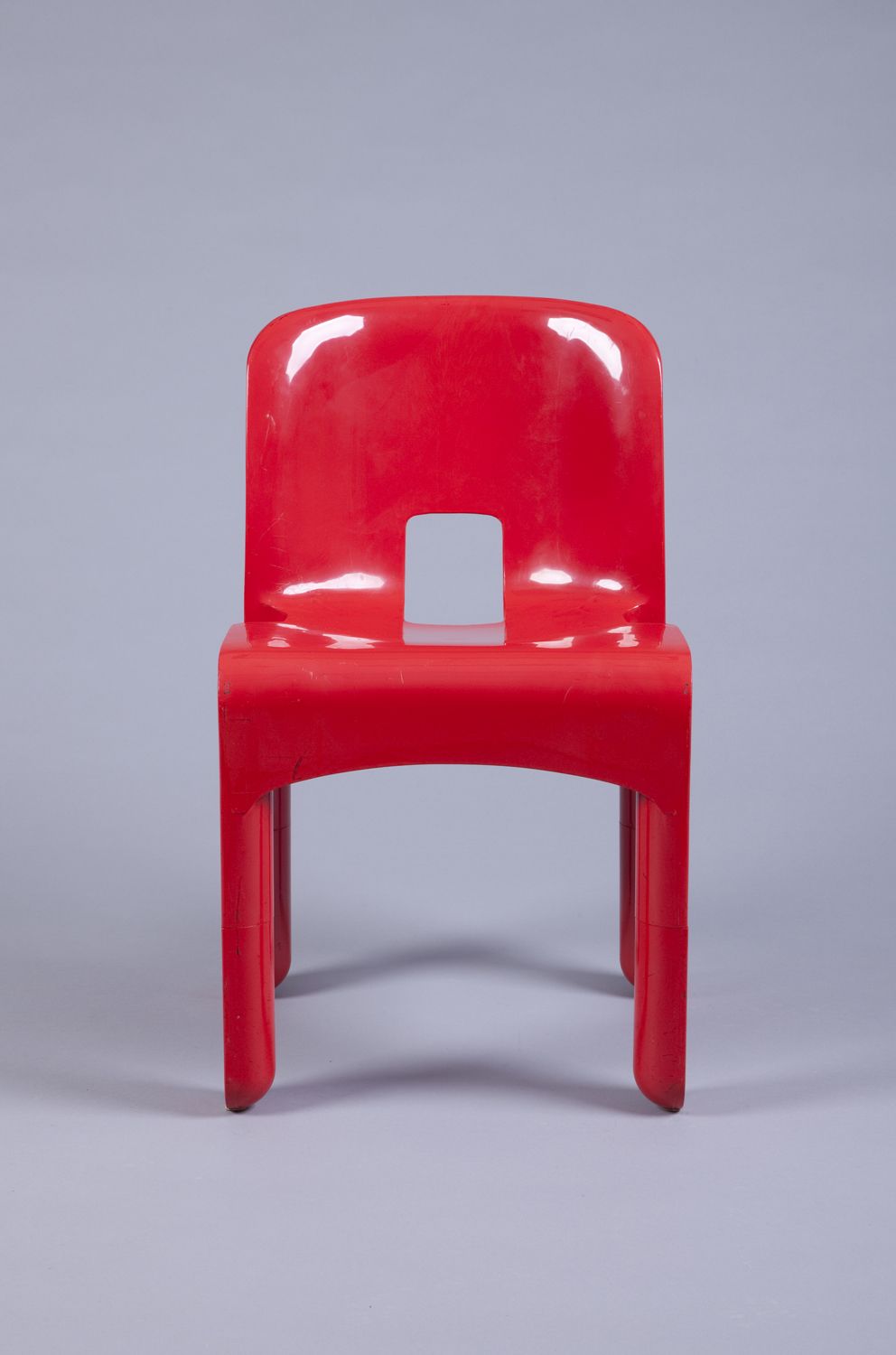
Through objects from the Goldstein’s permanent collection, Plastic Rapt: A History of Designing Forever acknowledges both plastic’s extreme versatility as well as its inherently detrimental qualities. On the one hand, plastic is a highly functional material that is used in products like laptops, food packaging, O-rings, and surgical gloves. Brightly colored toys, flexible spatulas, leggings, and lawn chairs are typically made from plastics. On the other hand, it is asphyxiating the earth’s oceans and atmosphere, and it is not designed to go away when we want it to.
Plastic Rapt: A History of Designing Forever
Exhibition Dates: June 25 – December 22, 2022
Goldstein Gallery, McNeal Hall
We have a complex relationship with plastic. Stop and look around…and at yourself. From the shoes on your feet, to the paint on your walls, from medical implants to artificial turf-we are surrounded by plastic. We can’t get along without it, and we take its benefits for granted. Using objects from the Goldstein, this exhibition will examine the history of plastic and its beauty and diversity as a design material.
Most of us are well aware that plastic has a dual nature: beautiful, quirky, colorful, and strong, but made into products of planned obsolescence. Plastic enhances our quality of life by solving design problems. It is also asphyxiating the earth’s oceans and atmosphere. Plastic can substitute for rare or expensive natural materials like wood, metal, or wool, but it is not designed to go away when we want it to.
Celluloid, the earliest semi-synthetic plastic, was invented in 1870 as a substitute for ever-scarcer ivory, the material used for billiard balls at that time. Plastic’s use as a material imitating nature expanded from there. The exhibition will include many “faux” objects made from celluloid, including decorative combs and fans imitating tortoise shell, amber, and ivory. Bakelite (1907), the first true synthetic plastic, had diverse applications, including jewelry, toys, radios, and the decorative handles for things like cocktail shakers.
Inventiveness around plastic was further unleashed during World War II with the development of nylon as a substitute for silk parachutes. This inventiveness has continued unabated, with the creation of everything from a molded-polypropylene chair to polyester double knits and CD players. Plastic Rapt: A History of Designing Forever acknowledges both plastic’s extreme versatility as well as its inherently detrimental qualities, which cannot be completely neutralized.





